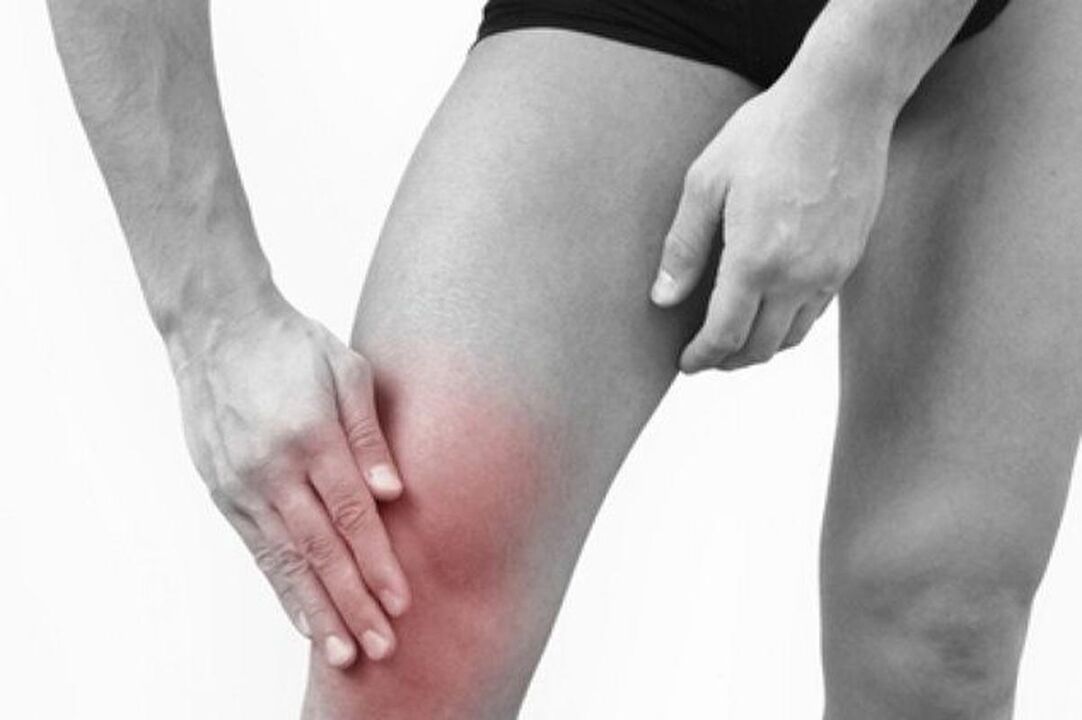
Gonarthrosis is an abnormal process in the cartilage tissue of the knee joint that leads to its deformation. This process involves high strain, abrasion and salt deposition on the knees.
Myths about gonarthrosis
There are three most famous myths:
- "Diagnosing gonarthrosis is a privilege for people with increased physical activity, and those who do predominantly sedentary work don’t suffer from it. " In fact, excessive physical exertion actually contributes to cartilage deterioration. During sitting work, a static effect occurs on the knees, blood supply is blocked. In addition, a sedentary lifestyle leads to an increase in body weight.
- "Gonarthrosis of the knee joint is incurable, the disease progresses every day. " This disease is indeed chronic, but timely treatment can prevent cartilage deterioration.
- "In case of arthrosis, you need to move as little as possible and lie more. " A patient with this pathology will receive special gymnastics that will strengthen the ligament device. Only a few sports are contraindicated.
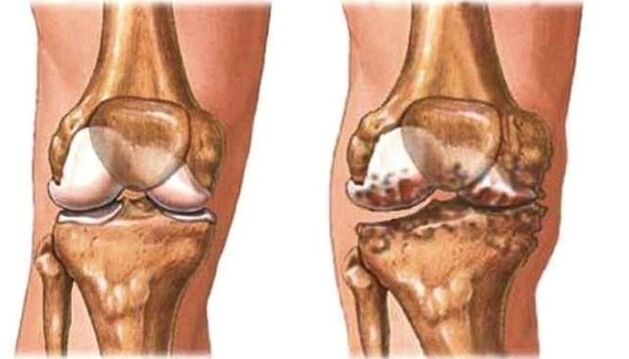
Gonarthrosis is the destruction of articular cartilage in the knee joint and adjacent bone surfaces.
Manifestations of knee arthrosis
Manifestations depend on the severity of the deformity. The more pronounced it is, the more pronounced the symptoms.
Symptoms of gonarthrosis:
- long asymptomatic period;
- discomfort in the knee area;
- pain syndrome;
- reduced mobility;
- morning stiffness for half an hour;
- the presence of crackling during active movement;
- gait change.
Bilateral gonarthrosis occurs when the knee joints of both limbs are involved in the process. This is one of the most serious forms. It occurs in the elderly.
Right gonarthrosis occurs with excessive static or dynamic exercise on the right limb. More often in athletes.
Left gonarthrosis occurs in overweight people and athletes struggling with left leg strain.

Causes of gonarthrosis
Gonarthrosis is primary and secondary. It can occur in primary childhood and adolescence, which is associated with malformed joints, as well as in the elderly due to the natural aging process.
It occurs due to secondary injury or pre-existing conditions. Main reason:
- fractures, bruises, dislocations;
- overweight;
- the presence of an inflammatory process in the joint and the lack of appropriate therapy;
- metabolic diseases accompanied by the deposition of salts in cartilage tissues;
- activities;
- Vitamin D deficiency;
- hormonal disorders;
- weight-lifting;
- some sports (running, hockey, soccer).
Who is in danger?
The risk group includes:
- professional athletes;
- obese people;
- patients who have undergone trauma or surgery;
- People over the age of 45;
- patients with varicose veins;
- those with family history of arthrosis.
The risk group also includes women who wear shoes with high heels or flat thin soles.
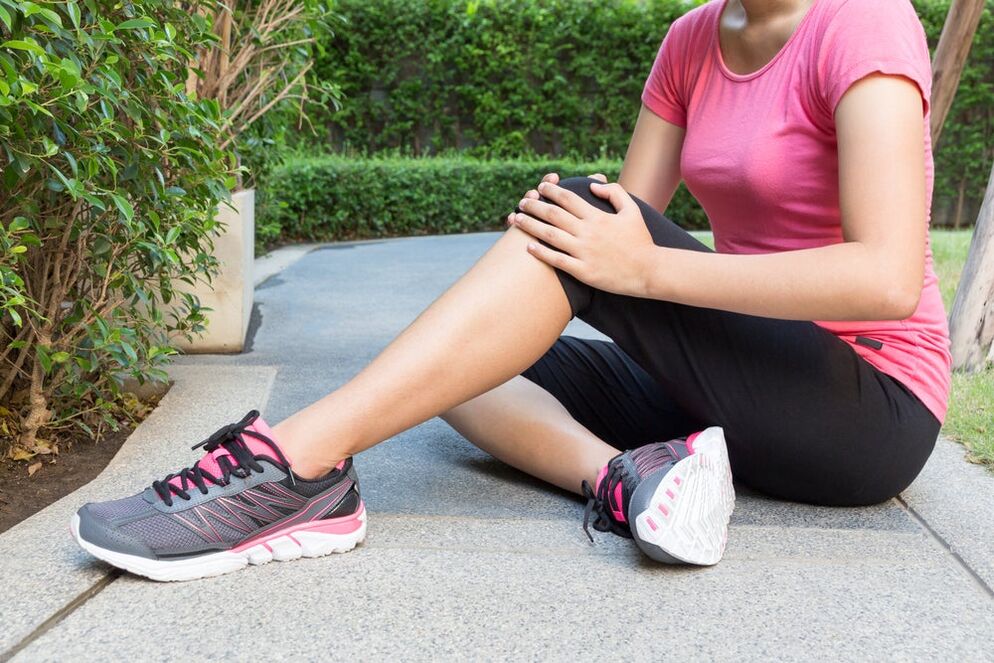
The exact causes of knee arthrosis are unknown.
Extent of gonarthrosis
Radiologically, this pathology is divided into 5 stages or stages:
- Stage 0 - absence of X-ray of arthrosis;
- Stage 1 - appearance of a small osteophyte;
- Stage 2 - the osteophyte has clear contours, with minimal change in joint space;
- Stage 3 - narrowing of the joint space;
- Stage 4 - marked narrowing of the gap, sclerosis of the subchondral bone.
Knee gonarthrosis 1 degree
The first degree is characterized by fatigue, limited mobility, and a crackling sound. The pain occurs after waking up, after a long session and physical exertion.
There is no deformation at this stage. X-ray shows a narrowing of the joint space.
How to treat gonarthrosis?
A special group of drugs is used for treatment - chondroprotectors. They contain chondroitin and glucosamine, which restore cartilage structure and increase elasticity. NSAIDs are used to relieve pain.
Primary gonarthrosis is most often bilateral. Even with the development of a unilateral form of the disease, after a while the second limb is involved in the pathological process.
The early symptoms of arthrosis of the knee joints are mild and not characteristic
Treatment methods
In addition to remission phase drug therapy, the following methods are used:
- physiotherapy;
- massages;
- leech therapy;
- ultrasonic exposure;
- radon and hydrogen sulfide baths;
- phonophoresis, electrophoresis;
- paraffin wraps;
- use of therapeutic mud.
These methods are used regardless of the stage of development of the disease during remission.
Is mud good for knee gonarthrosis? One of the indications for mud therapy is diseases of the musculoskeletal system. Therapy is performed twice a year. It contains 10-15 procedures. The method can also be used at home and impurities can be purchased at the pharmacy.
In the first degree, the patient prescribes orthopedic shoes for the period of exacerbation to prevent the development of the deforming process. Women are recommended to wear shoes with a thick sole of at least 1 cm and heels of 5 cm. Jelly meat and jelly are included in the diet as natural chondroprotectors.
Another method is weight correction. Reducing body weight to an optimal level reduces the load on the musculoskeletal system for a given patient.
Grade 2 gonarthrosis
In the second degree, the pain increases, which makes the movement significantly restricted. Long-term walking causes great pain. The patient should rest to continue.
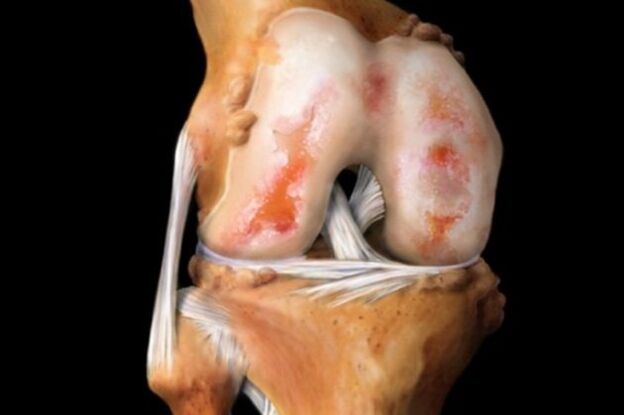
If treatment is not started (or is ineffective), arthrosis of the knee joint will continue to develop.
The crunch becomes loud, lameness appears. The affected joint is deformed. An inflammatory process occurs in the inner membrane of the joint.
On a smooth X-ray, a narrowing of the joint space and the appearance of bone spikes (osteophytes) can be observed.
Treatment
Drug therapy is based on the use of NSAIDs. They have analgesic and anti-inflammatory effects. In addition, chondroprotectors are prescribed.
After the exacerbation, physiotherapy exercises and massage are prescribed.
Dietary recommendations:
- increase the amount of vegetables;
- include jelly and jelly meat in the diet;
- eat lean fish twice a week;
- prefer lean meat;
- bran to eat bread.
It is also recommended to include bananas, nuts, eggs, spinach, legumes, liver, cabbage in the diet.
In addition to orthopedic shoes, special knee pads are prescribed.
Arthroscopic removal of deforming tissue from surgical procedures is used. The short-term effect of this method is 2-3 years.
Gonarthrosis of the knee, Grade 3 symptoms and treatment
The most severe degree. Pain syndrome occurs while moving and at rest. Mobility in the knee is as limited as possible and sometimes impossible. The deformation is pronounced. There is virtually no joint space on the x-ray.
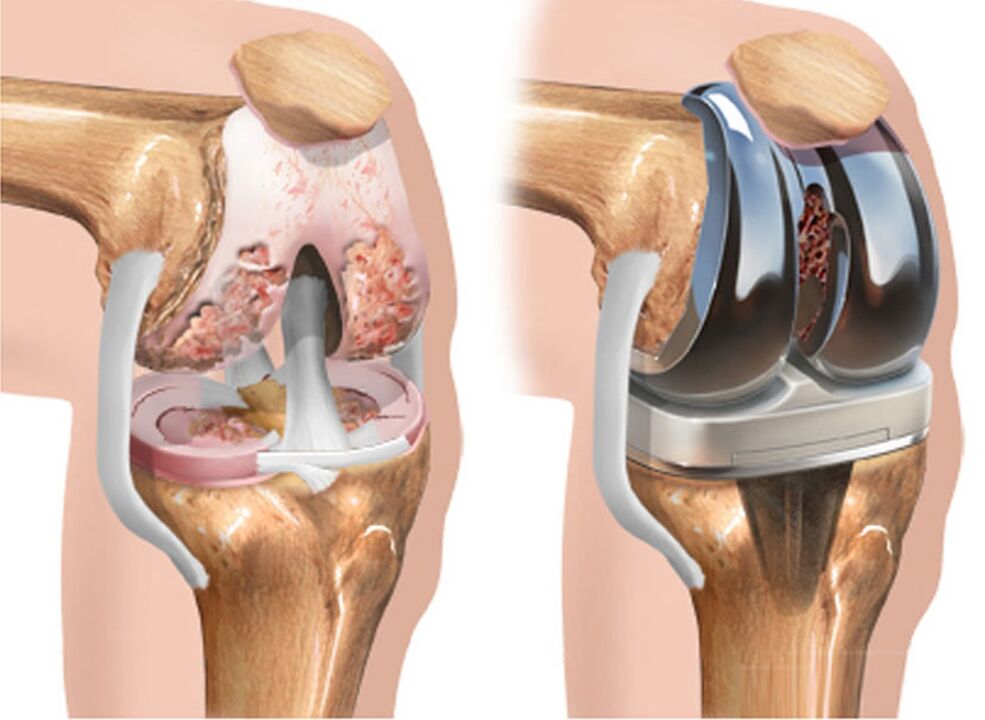
The gradual destruction of cartilage and bones in the last stages leads to the development of ugly deformities of the knee, which increases.
Treatment
At this stage, in addition to non-steroidal anti-inflammatory drugs, hormonal medications are prescribed to the patient. It is injected intravenously or inside the joint. Severe pain syndrome is relieved by painkillers.
In stage 3, the operation is already visible - endoprosthetics. Either they replace individual bone elements or the entire joint. Contraindications: osteoporosis.
Complications of arthroplasty:
- marginal skin necrosis;
- rejection of the prosthesis;
- neurovascular disorders (paresis, thrombosis).
In addition to endoprosthetics, arthrodesis is also performed - removal of deformed tissue and joints. Rarely used.
Osteotomy - cutting out the edges of the bones to redistribute the load.
Physiotherapy
Exercises with knee joint gonarthrosis can relieve pain, strengthen muscles, and stimulate blood flow.
- Task 1. The patient lies on his back, lifts his straight leg and holds it for at least 30 seconds, then the second. The execution time should be reduced to 2 minutes.
- Exercise 2 "Bicycle". Lying on his back, he mimics cycling with his feet. Repeat 20-50 times.
- Exercise 3. The patient lies on his stomach, alternately bending his leg and trying to reach the buttocks with the heel. Repeat 20-50 times.
- Exercise 4. This happens the same as the previous one, only statically. That is, the patient fixes the limb in this position for 20-30 seconds.
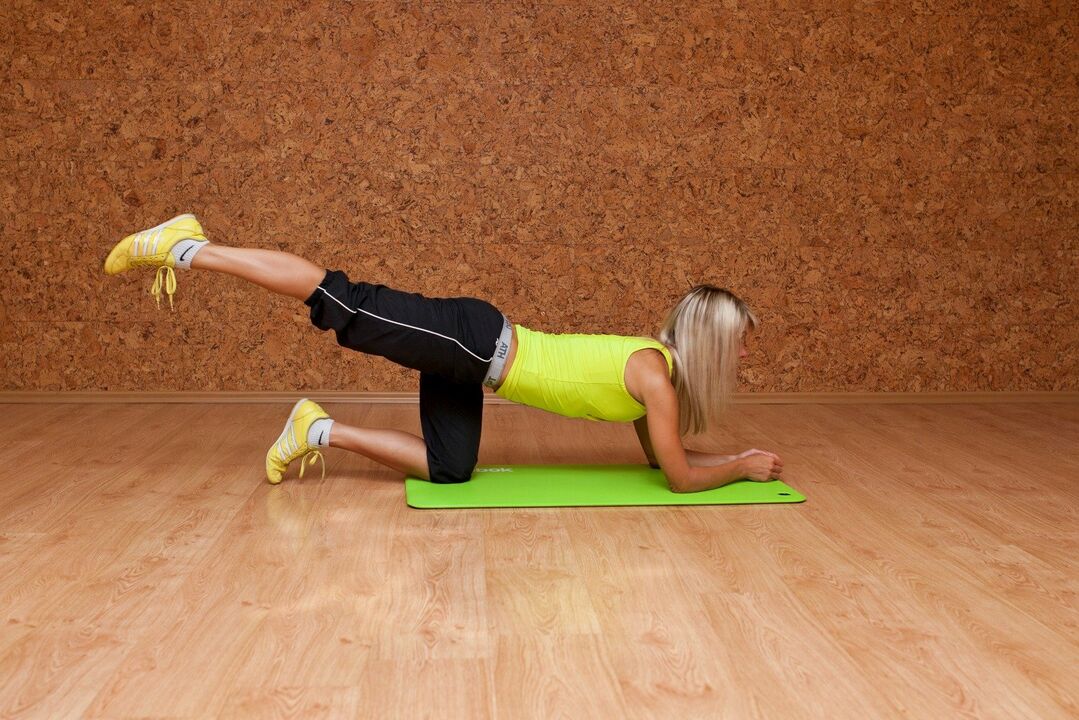
It is recommended that patients be provided with:
- Task 1. In a standing position, bend over and try to reach the floor without bending your knees. Hold for 20 seconds, inhale air through the nose, and exhale through the mouth.
- Exercise 2. If you are sitting on the floor with straight legs, try wrapping your arms around your legs while keeping your knees straight. Hold this position for up to 30 seconds. Take 2-3 approaches. If the elasticity is not enough to reach the foot, he grabs the foot by the lower leg and tries to pull the body as close to the foot as possible.
- Exercise 3. Same position as the previous one. The patient takes his foot by the foot, tries to straighten it, and keeps it as high as possible above the floor. If the exercise is difficult to perform, the leg should be taken to the lower leg area. Hold the position for 10-30 seconds and then with the other leg.
The contraindication is the period of exacerbations and the presence of an acute inflammatory process. Patients are prohibited from running, walking for long periods and squatting.
After performing physiotherapy exercises, it is useful to massage the muscles of the thighs and lower legs on the affected limb. The joint itself should not be affected, this will increase inflammation.
Disease prevention
This disease is not inherited, so its development can be prevented. This requires:
- avoid injuries while exercising;
- perform stretching and joint gymnastics, yoga;
- eat properly;
- maintaining a normal body weight;
- if you experience discomfort in the knee area, consult a doctor;
- drink enough water;
- Take chondroprotectors prophylactically after 40 years;
- do not overcool the joints;
- in the presence of the early stages of the process and during remission, do not increase physical activity or run;
- wear orthopedic shoes;
- use a knee pad while exercising.















































